
Energia was a 1980s super-heavy lift launch vehicle. It was designed by NPO Energia of the Soviet Union as part of the Buran programme for a variety of payloads including the Buran spacecraft. Control system main developer enterprise was the Khartron NPO "Electropribor". The Energia used four strap-on boosters each powered by a four-chamber RD-170 engine burning kerosene/LOX, and a central core stage with four single-chamber RD-0120 (11D122) engines fueled by liquid hydrogen/LOX.

An expendable launch system is a launch vehicle that can be launched only once, after which its components are either destroyed during reentry or discarded in space. ELVs typically consist of several rocket stages that are discarded sequentially as their fuel is exhausted and the vehicle gains altitude and speed. As of 2022, most satellites and human spacecraft are currently launched on ELVs. ELVs are simpler in design than reusable launch systems and therefore may have a lower production cost. Furthermore, an ELV can use its entire fuel supply to accelerate its payload, offering greater payloads. ELVs are proven technology in widespread use for many decades.

A sounding rocket or rocketsonde, sometimes called a research rocket or a suborbital rocket, is an instrument-carrying rocket designed to take measurements and perform scientific experiments during its sub-orbital flight. The rockets are used to launch instruments from 48 to 145 km above the surface of the Earth, the altitude generally between weather balloons and satellites; the maximum altitude for balloons is about 40 km and the minimum for satellites is approximately 121 km. Certain sounding rockets have an apogee between 1,000 and 1,500 km, such as the Black Brant X and XII, which is the maximum apogee of their class. Sounding rockets often use military surplus rocket motors. NASA routinely flies the Terrier Mk 70 boosted Improved Orion, lifting 270–450-kg (600–1,000-pound) payloads into the exoatmospheric region between 97 and 201 km.

Vega is an expendable launch system in use by Arianespace jointly developed by the Italian Space Agency (ASI) and the European Space Agency (ESA). Development began in 1998 and the first launch took place from the Centre Spatial Guyanais on 13 February 2012.

The Black Brant is a family of Canadian-designed sounding rockets originally built by Bristol Aerospace, since absorbed by Magellan Aerospace in Winnipeg, Manitoba. Over 800 Black Brants of various versions have been launched since they were first produced in 1961, and the type remains one of the most popular sounding rockets. They have been repeatedly used by the Canadian Space Agency and NASA.
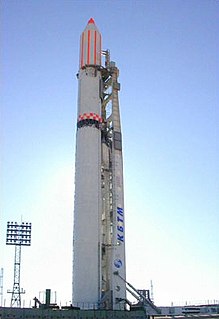
Zenit is a family of space launch vehicles designed by the Yuzhnoye Design Bureau in Dnipro, Ukraine, which was then part of the Soviet Union. Zenit was originally built in the 1980s for two purposes: as a liquid rocket booster for the Energia rocket and, equipped with a second stage, as a stand-alone middle-weight launcher with a payload greater than the 7 tonnes of the Soyuz but smaller than the 20 tonnes payload of the Proton. The last rocket family developed in the USSR, the Zenit was intended as an eventual replacement for the dated Soyuz and Proton families, and it would employ propellants which were safer and less toxic than the Proton's nitrogen tetroxide/UDMH mix. Zenit was planned to take over crewed spaceship launches from Soyuz, but these plans were abandoned after the dissolution of the Soviet Union in 1991.

A launch vehicle or carrier rocket can carry a payload from the surface to outer space, such as spacecraft and satellites. They are often operated with extensive infrastructure such as launch pads, vehicle assembly, fueling systems, range safety, etc. The difficulties of spaceflight demand launch vehicles to be engineered with very advanced aerodynamics and technologies – a big contributor to the vehicle's expensive operating cost.

Skylark was a family of British sounding rockets. It was operational between 1957 and 2005.
The Dragon is a two-stage French solid propellant sounding rocket used for high altitude research.
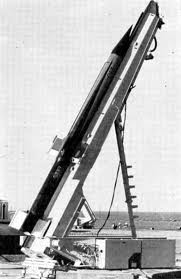
Centaure was a two-stage French sounding rocket consisting of a Belier (rocket) starting stage and a Venus upper stage. It was operated by CNES between 1961 and 1986. The Centaure has been built in a number of 230 and has been launched from the CIEES/Hammaguir missile range, Reggane, CELPA, Salto di Quirra, Esrange, Thumba, Sonmiani, and Andøya. It had a maximum payload of 60 kg, a maximum height of 140 km, a launch thrust of 44 kN, a launch weight of 457 kg, a diameter of 0.28 m and a length of 6.02 m. It belongs to a family of solid-propellant rockets consisting of the Belier, Centaure, Dragon, Dauphin, and Eridan rockets.

Salto di Quirra is a restricted weapons testing range and rocket launching site near Perdasdefogu on Sardinia.
It is the largest military range in Italy, composed of 12000 hectares of land owned by the Italian Ministry of Defence and one of the largest in operation within the European Union. Birth defects and cancer in the area have been blamed on weaponry used at the site.
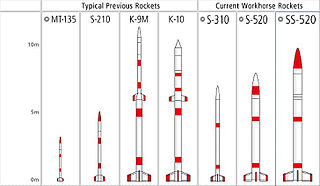
S-Series is a fleet of sounding rockets funded by the Japan Aerospace Exploration Agency (JAXA) that have been in service since the late 1960s. Manufactured by IHI Aerospace and operated by the Institute of Space and Astronautical Science (ISAS). The nomenclature of the S-Series rockets is the number of "S"s indicates the number of stages, and the following number details the diameter of the craft in millimeters. For example, the S-310 is a single stage rocket with a diameter of 310 mm.

Arcas was the designation of an American sounding rocket, developed by the Atlantic Research Corp., Alexandria, Va.
The Zenit-3SL is an expendable carrier rocket operated by Sea Launch. First flown in 1999, it has been launched 36 times, with three failures and one partial failure. It is a member of the Zenit family of rockets, and is built by the Yuzhnoye Design Bureau. RKK Energia produces the Block DM-SL upper stage, whilst the payload fairing is produced by Boeing. Launches are conducted from the Ocean Odyssey platform anchored on the equator in the Pacific Ocean, at a point with 154°W longitude, about 370 kilometres east of Kiritimati.
Fregat (Russian: Фрегат, frigate) is an upper stage developed by NPO Lavochkin in the 1990s, which is used in some Soyuz and Zenit launch vehicles, but is universal and can be used as a part of a medium and heavy class launch vehicles. Fregat became operational in February 2000. Its liquid propellant engine uses UDMH and N2O4. Fregat's success rate is 97.8% (with 2 failures in 93 launches), which makes it one of the most reliable upper stages in the world. Fregat has successfully delivered more than 300 payloads into different orbits. It remains the only upper stage in the world that can place its payload into 3 or more different orbits in a single launch.
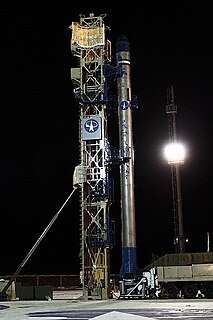
The Safir was the first Iranian expendable launch vehicle able to place a satellite in orbit. The first successful orbital launch using the Safir launch system took place on 2 February 2009 when a Safir carrier rocket placed the Omid satellite into an orbit with a 245.2 km (152.4 mi) apogee. Making Iran the ninth nation capable of producing and launching a satellite.

Rohini is a series of sounding rockets developed by the Indian Space Research Organisation (ISRO) for meteorological and atmospheric study. These sounding rockets are capable of carrying payloads of 2 to 200 kilograms between altitudes of 100 to 500 kilometres. The ISRO currently uses RH-200, RH-300, RH-300 Mk-II, RH-560 Mk-II and RH-560 Mk-III rockets, which are launched from the Thumba Equatorial Rocket Launching (TERLS) in Thumba and the Satish Dhawan Space Center in Sriharikota.
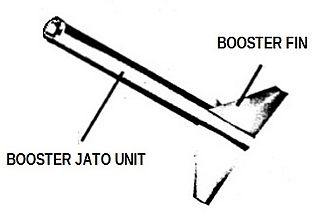
The Nike stage or Nike booster, a solid fuel rocket motor, was created by Hercules Aerospace for the Nike Ajax (M5) Nike Hercules (M5E1). It was developed for use as the first stage of the Nike Ajax and Nike Hercules missiles as part of Project Nike.

Zefiro is a family of solid-fuel rocket motors developed by Avio and used on the European Space Agency Vega rocket. The name Zefiro derives from the acronym ZEro FIrst stage ROcket, conceived when this motor was intended to be used as first and second stages of San Marco program of the Italian Space Agency (ASI). After its intended use as booster was shelved the acronym was dropped and only the reference to the Greek god of the west wind Zephyrus remained.

M10 is a liquid-fuel upper-stage rocket engine in development by Avio on behalf of European Space Agency for use on Vega E. The engine, initially known as LM10-MIRA, was a derivation of the existing Russian RD-0146 engine and result of a past collaboration between Avio and Chemical Automatics Design Bureau (KBKhA) ended in 2014 after the escalation of the Russo-Ukrainian conflict and consequent economic sanctions. On May 6, 2022 engine testing campaign started at Salto di Quirra, Sardinia, with consequent maiden flight on a Vega-E launcher expected by 2026 from Guiana Space Centre.
















